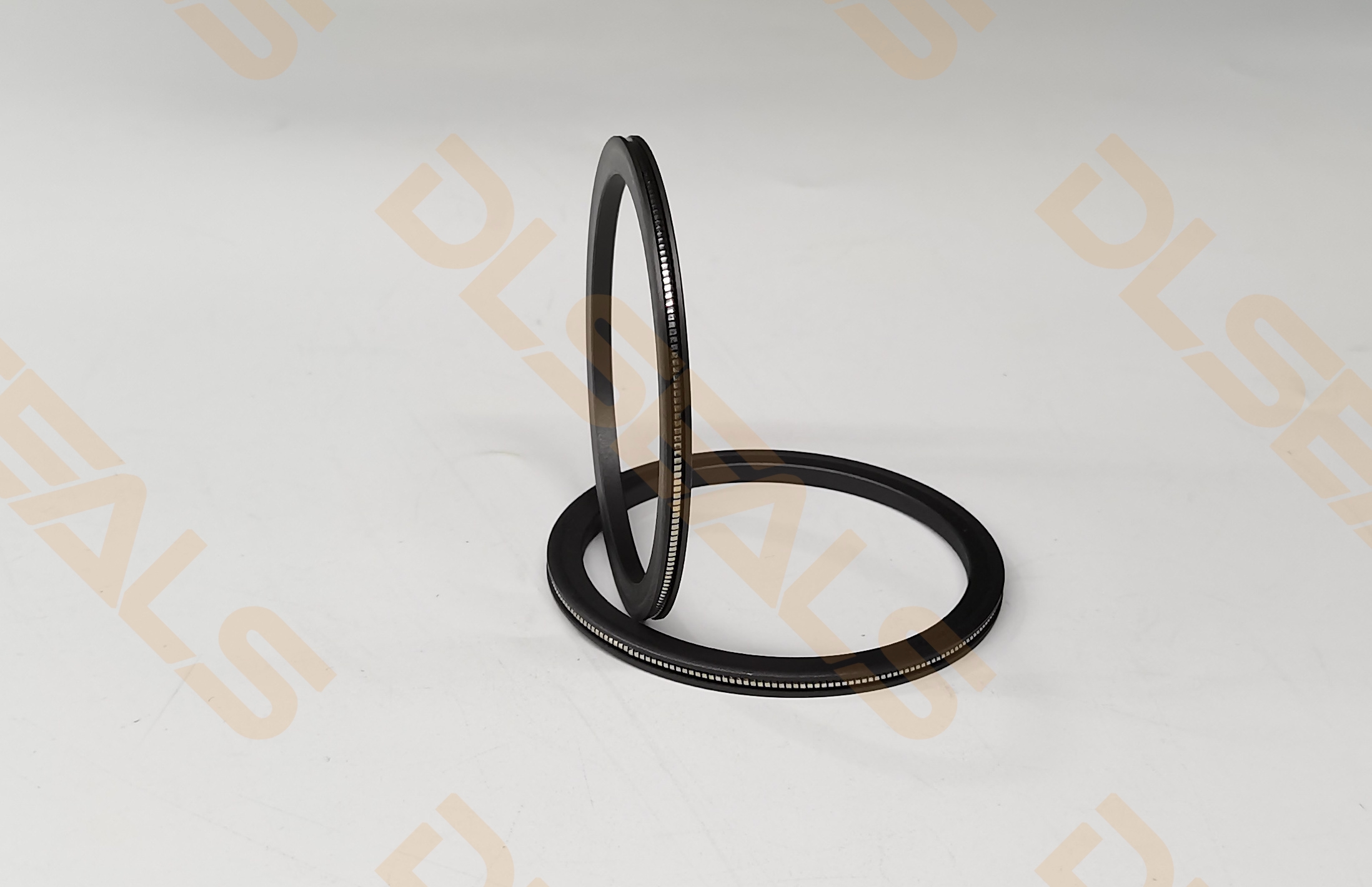News
A2025-08-01

In hydraulic cylinders, servo systems, and precision rotating equipment, Face Sealing Spring-Energized Seals (FSSES) address critical challenges in high-pressure, high-speed, and long-life sealing through a unique synergy of spring force + sealing ring. This article analyzes their structural advantages, working principles, material selection, and applications.
| Component | Function | Design Features |
|---|---|---|
| Metal Spring | Provides continuous radial force | Coiled/C-shaped spring (SS316/Ni alloy); pre-compressed for constant elasticity |
| Sealing Ring | Seals against shaft/bore surfaces | U/V-shaped PTFE composite; low friction (μ≈0.02–0.08), high wear resistance |
| Spring Groove | Holds spring and transfers force | Precision-machined; ensures even force distribution |
Structural Advantages:
| Parameter | FSSES | Traditional Rubber Seals |
|---|---|---|
| Pressure | ≤70 MPa steady / ≤100 MPa dynamic | Typically ≤10 MPa; prone to extrusion |
| Speed | ≤20 m/s high-speed / 0.01 mm/s low-speed | Friction heat at high speed; stick-slip at low speed |
| Temperature | -100°C to +260°C (PTFE + specialty springs) | NBR/FKM: -40°C to 150°C/200°C |
| Chemical Resistance | Resists acids/alkalies/solvents | Swells/corrodes (e.g., NBR vs. ketones) |
| Service Life | 10,000+ hours (dry or high-speed) | 2,000–5,000 hours (lubrication-dependent) |
| Friction Power Loss | Ultra-low (PTFE self-lubricating) | High (rubber μ≈0.2–0.5) |
Note: Spring force is critical (0.2–0.8 MPa optimal).
Sealing Ring Materials
| Base Material | Filler | Key Properties | Applications |
|---|---|---|---|
| Pure PTFE | None | Best chemical inertness; poor wear | Ultra-clean/corrosive (semiconductor) |
| Glass-Filled PTFE | 15–25% glass fiber | High rigidity/wear; abrasive to shafts | Heavy-duty hydraulic cylinders |
| Carbon-Filled PTFE | 10–20% carbon fiber | Wear/heat resistance | High-speed servo systems |
| Graphite-Filled PTFE | 5–15% graphite/MoS₂ | Optimal self-lubrication | Dry-running/low-temperature starts |
| PEEK-PTFE Composite | 10–30% PEEK | Extreme PV/temp (300°C) | Aerospace actuators |
Spring Materials:
| Industry | Application | Solution | Value Proposition |
|---|---|---|---|
| Construction Machinery | Hydraulic cylinder rod seals | Carbon-PTFE FSSES + SS316 spring | Shock pressure resistance + grit wear |
| Injection Molding | Screw seals | Glass-PTFE FSSES + bidirectional sealing | Melt corrosion resistance + dry-running |
| Wind Turbines | Pitch bearing seals | Graphite-PTFE FSSES + cryogenic spring | -40°C cold start + 20-year maintenance-free |
| Semiconductor | Robotic arm shaft seals | Pure PTFE FSSES + low-outgassing spring | Plasma etch resistance + particle-free |
| Aerospace | Actuator seals | PEEK-PTFE FSSES + Hastelloy spring | Skydrol® compatibility + thermal cycling |
Critical: Spring force requires precise calculation—consult OEM test data.
[DLSEALS kindly Reminder] Sealing issues? Turn to DLSEALS! As a sealing component manufacturer, we specialize in customizing sealing components, providing a full range of services from design, research and development, production, testing, and more. If you have more information you'd like to know, feel free to contact us directly. DLSEALS's product experts are dedicated to serving you!